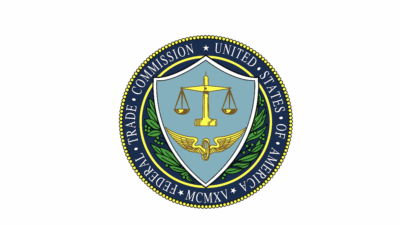Bank financial scams are fraudulent activities where perpetrators impersonate legitimate financial institutions to deceive individuals or enterprises into revealing sensitive information, often leading to financial loss. Common types of these scams include phishing, vishing, and smishing, which utilize deceptive emails, voice calls, or text messages respectively to trick victims.
Bank and financial scams have become a pervasive threat to consumers, of course, but how do what enterprise security is needed in the bank and financial sectors to fight it?
Here we delve into the nature of these scams, their impact on enterprise security, and how enterprises can protect themselves from bank scams and financial scams using advanced technology and other tools.
In this article, we will discuss:
- Understanding Bank and Financial Scams
- The Impact of Scams on Enterprises
- Leveraging Technology for Protection
Common Bank And Financial Scams
Bank and financial scams have evolved over the years, becoming more sophisticated and harder to detect. Phishing, vishing, and smishing are among the most common types of bank scams. Phishing involves sending deceptive emails that appear to come from legitimate institutions, vishing uses voice calls to trick individuals into revealing sensitive information, and smishing uses SMS (text) messages for the same purpose.
For instance, a scammer might impersonate a bank’s customer service representative in a vishing scam, claiming that the customer’s account has been compromised and asking for their account details to “resolve” the issue. In reality, the scammer uses this information to drain the customer’s account or commit identity theft. This is a classic example of a bank scam that leverages the trust customers place in their banks.
The Impact Of Scams On Enterprises
The impact of these scams on enterprises is far-reaching. Beyond the immediate financial losses, they can lead to diminished trust in the brand, a tarnished image, damaged customer relationships, and even legal repercussions.
For example, when a customer falls victim to a scam that impersonates a particular bank, their trust in that bank may be irreparably damaged. They may choose to close their accounts and switch to a different bank, leading to a loss of business for the impersonated bank. Moreover, the bank may face legal action if customers claim that the bank did not do enough to protect them from such scams. Regulatory action and bad press are also potential outcomes from financial scams such as these.
According to the Anti-Phishing Working Group, in the first quarter along of 2022, there were over 1 million observed phishing attacks. Phishing attacks against the financial sector — which includes banks — remained the largest group, representing almost 24% of all phishing.
Leveraging Technology For Protection
To combat these scams, there are clear steps that enterprises can take to bolster their defenses:
- Employee Training: Setup systems that ensure regular employee training to recognize and report phishing attempts and other scams. This includes training the marketing team on how to communicate externally with customers about these issues, the IT teams, and even management.
- Multi-Factor Authentication: Push multi-factor authentication for all systems and all clients, particularly those that handle sensitive information. This adds an extra layer of security that makes phishing/vishing/smishing less effective.
- Regular Audits: Conduct regular security audits to identify potential vulnerabilities and address them promptly. This includes checking for outdated software, weak passwords, and other security risks. Feeling bold? Have these numbers and trends reported to the CEO and/or Board on a regular basis.
- Incident Response Plan: When was the last time you updated your incident response plan? With the new rise if AI tools, it’s expected that things will change monthly, and you should feel confident that your team knows exactly what to do to mitigate the damage of a breach breaches.
- AI and Machine Learning Tools: It seems almost daily another AI tool becomes available, and it’s expected that AI automation will both improve results and reduce cybersecurity expenses … while at the same time, the threats will expand significantly. What is your organization’s written plan to keep up with AI? Or is it time to write one?
- Partnerships: As the technology becomes more and more complex, no one organization can handle every element of technology. So collaborations — with both communication carriers and security partners — is also crucial. Partnerships here result in the proverbial 1 + 1 = 3. The results are greater than the entities individually.
Enterprises need to leverage advanced technology. One organization that offers turnkey enterprise security against phishing, vishing, and smishing bank scams is YouMailPS. Their patented products use real-time audio collection, content-based analytics, and audio fingerprinting to detect and eliminate imposter traffic, often zero-hour. This technology can identify scam calls and messages, even if the scammers use different numbers or voice modulation techniques, and provides reporting services for enterprise use.
In addition to helping reduce the direct losses from bank scams, YouMailPS’s solutions can assist in legal action against bank scammers, enhanced governmental compliance, and additional layers of legal defense.
Bank and financial scams pose a significant threat to enterprises, impacting their financial health and reputation. Understanding these scams and their techniques is the first step towards protection. Leveraging advanced technology, like YouMailPS’s offerings, and collaborating with communication carriers and partner organizations can provide robust protection against these scams.
Don’t let your enterprise fall victim to bank and financial scams. Contact YouMailPS today to learn more about our advanced technology solutions and protect your enterprise effectively.
FAQs About Bank And Financial Scams
What are the common types of bank and financial scams that enterprises need to be aware of?
Common types of bank and financial scams include phishing, vishing, and smishing. Phishing involves sending deceptive emails posing as legitimate institutions, vishing uses voice calls to trick individuals into revealing sensitive information, and smishing uses SMS messages for the same purpose. Scammers often impersonate trusted figures like bank customer service representatives to extract personal information from their victims.
How do bank and financial scams impact enterprises?
The impact of bank and financial scams on enterprises is extensive. They can lead to immediate financial losses, diminished trust in the brand, damaged customer relationships, tarnished reputation, and potential legal repercussions. Victims may lose trust in the impersonated entity, possibly resulting in loss of business and regulatory issues.
What are some of the methods enterprises can leverage to protect themselves from these scams?
Enterprises can take several steps to protect themselves from scams:
- Regular employee training to recognize and report phishing attempts
- Implementing multi-factor authentication for added security
- Regular security audits to identify potential vulnerabilities
- Updating incident response plans
- Using AI and Machine Learning tools for better cybersecurity
- Forming collaborations with communication carriers and security partners.
How does the technology provided by YouMailPS help combat bank and financial scams?
YouMailPS provides turnkey enterprise security against phishing, vishing, and smishing scams. They use real-time audio collection, content-based analytics, and audio fingerprinting to detect and eliminate imposter traffic. Their technology can identify scam calls and messages, even if scammers use different numbers or voice modulation techniques, and offer reporting services for enterprise use.
What additional benefits can YouMailPS’s solutions provide apart from direct loss prevention?
Apart from helping to reduce the direct losses from bank scams, YouMailPS’s solutions can assist in legal action against bank scammers, aid in enhanced governmental compliance, and provide additional layers of legal defense. They aim to offer robust protection against these scams and help enterprises protect their financial health and reputation.





